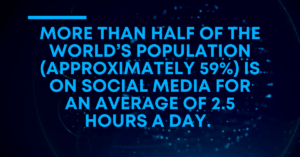Email. For friends and family, it’s an efficient way to keep in touch. For marketers, it’s an effective tool to get your brand’s message out. And for most, it’s the annoying reason your iPhone vibrates every three and a half minutes. As we near the end of 2014, there’s no doubt email is an essential part of modern life. But even with now decades of digital marketing experience, many marketers still don’t attribute the appropriate amount of value to their email lists.
If your startup company is like many, you might be asset rich, but cash poor. You’ve also probably spent a large amount of time building a strong email list. There’s no doubt it took serious effort to get your site’s users to fill out a lead generation form. By filling out of your form, the user has expressed some interest to hear more from you. On some special occasions, they might even be converted into a customer! Hoorah! Yet, so many emails are unopened and end up in the trash folder. Consequently, there’s a lack of perceived value.
If you’re one of the naysayers who still think an email is worthless, I’m here to tell you… You’re wrong!

What’s that? Tell me more, you say? Well, you’re in luck. Here are two quick, simple methods for calculating how much that massive list of names@domains are actually worth.
The most elementary way to calculate email value, as recommended by SimpleRelevance CEO, Erik Severinghaus, is by calculating replacement cost. Does your sales process require a user to respond to your Call-to-Action and fill out a contact form? How much does it cost to add a subscriber to your list? In this example, let’s compare two startups that are competing for the same customers. Startup A has approximately 15,000 subscribers, while Startup B has around 10,000. They both utilize Google AdWords or any PPC tool and spend $5 per subscriber to build their email list. By multiplying the size of the email list by the cost of acquiring an email address, we can say the replacement cost of Startup B’s email list is $50,000. For Startup A, it would cost $75,000 to replace its list. By this logic, surely Startup A has a richer asset than Startup B.
In our next, slightly more complicated method from WhatCounts, a great starting point is to look at last year’s revenue numbers and total form submissions. Using Google Analytics, set a goal to the “thank you” page the user sees after filling out your form and assign it a value of last year’s revenue/last year’s form submissions. (Do this before moving forward!). Next, set the time frame of the report to your average customer lifecycle. In this case, we’ll keep it simple and call it 6 months. Let’s say email is responsible for a goal value of approximately $50,000 during this time. Let’s also assume that our subscriber list was around 8,000 subscribers at that time. By using the simple formula above, we can roughly say that the value of a subscriber’s email address is $6.25.
However, this assumes all email addresses are created equal and any marketer will tell you that is certainly not the case. Unengaged, unresponsive subscribers are worth nothing. So, if we dig a bit deeper into our analytics, we see that out of our 8,000 subscribers, only 4,500 have opened one of our emails in the past 6 months. Therefore, we can say that the value of an engaged subscriber is $11.11. This means you’re justified in offering a small incentive, such as a coupon, in order to add another $11.11 of value to your list.

For those interested in learning an even more accurate method of calculating the worth of an email address, check out the rest of Erik Severinghaus’s brilliant article on American Express’s Open Forum.
If you have experience in determining email value, we’d love to hear your experiences and any suggestions you have. Be sure to stay tuned to learn even more digital marketing insight from Team Sideqik.
Be Super.
Sideqik Marketing
Latest posts by Sideqik Marketing (see all)
- The Coolest Things Tiktok Made Us Buy - November 10, 2021
- How to Prep Your Influencer Strategy for the Black Friday E-commerce Influx - November 8, 2021
- Building an Influencer Program From Scratch - March 12, 2019







